Los Angeles.
Part 1. South Central
Journey in America begins with Los Angeles, and along with it comes an irresistible desire to leave the USA on the very first day.
Los Angeles is a city without end. On paper, the city’s area is approximately equal to that of Moscow, but personal experiences are far from paper — LA seamlessly merges with its numerous suburbs into one vast hypercity spanning 12,000 km². It is called “Greater Los Angeles,” and it is 10 times larger than Moscow.
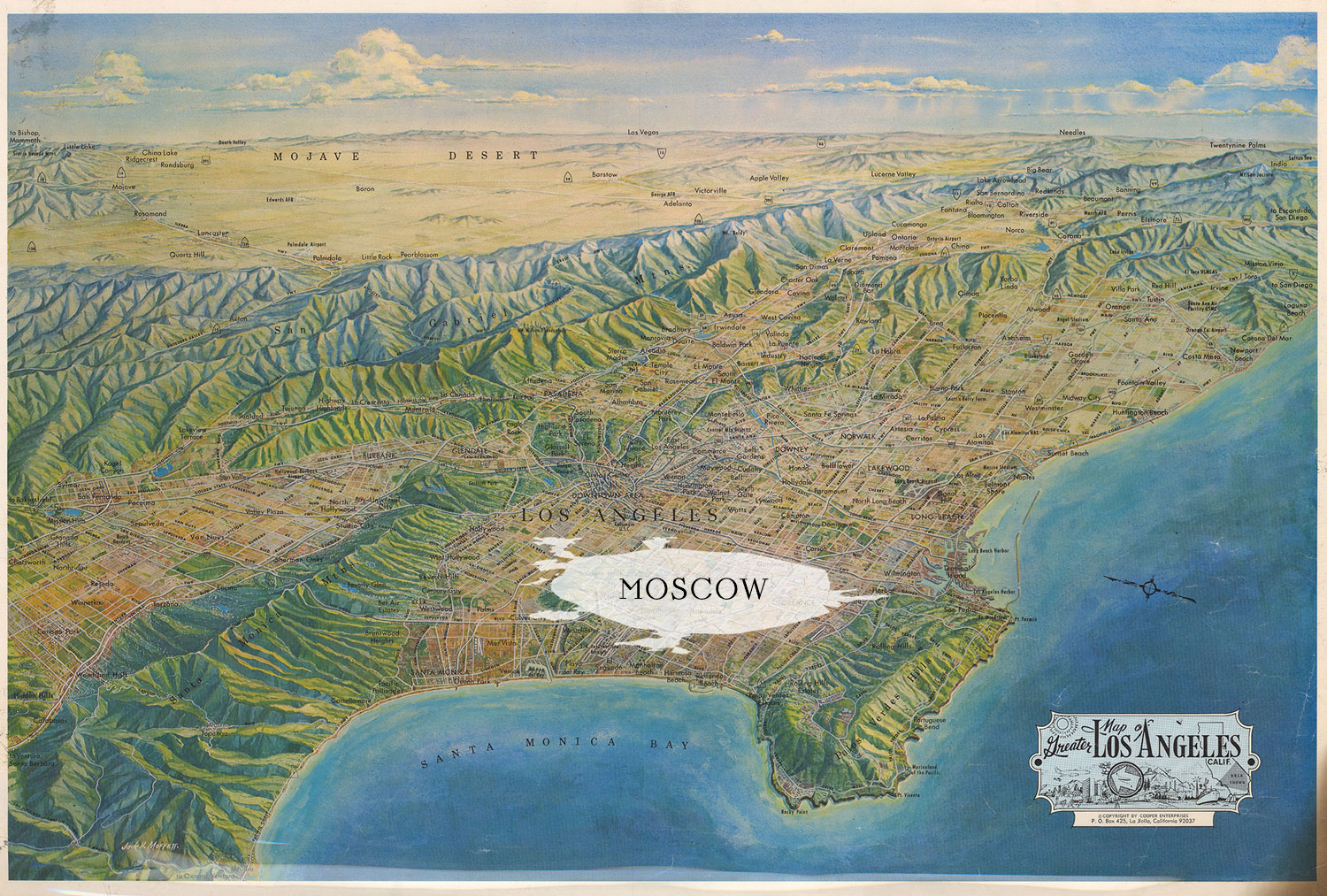
Los Angeles is a monstrous city. It repels with its size. It is impossible to get around it. For instance, to travel from Santa Monica Beach on the west coast to the city center, you’d have to spend about an hour on the subway. Just to reach the city center! We’re not even talking about traveling across the entire city.

Even more: it would take an hour and a half to travel from Downtown to the southern beach of Long Beach at the other end. Thus, to get from one end of the city to the other by bus or subway, it would take a minimum of 2 hours and 30 minutes.

But that’s still not the whole city! The visual boundary of Los Angeles extends another two times further.
Why am I talking about a visual boundary? Because paper borders mean nothing. The city doesn’t end there; it ends another 2 or 3 hours away, when it finally transitions into countryside.
You can die while getting there.

The catastrophe of Los Angeles is that its gigantic area is completely filled with identical single-story houses. Only a few downtown skyscrapers protrude from the flat, gray landscape.

You can’t even seek refuge in the subway from the city — a large part of the metro is above ground, and trains often run almost alongside the road. This frequently leads to a car crash in a train. Absurd.

Surface transportation in LA is actually scary: you have to look out the window for the entire journey, and all you see is the same thing. Two hours straight.
A large part of Los Angeles consists of ghettos, landfills, and industrial zones.
South Central
South Central is not a fictional place from the movie “Don’t Be a Menace to South Central...” It is a real district in Los Angeles, located in the southern part.
South Central is a constellation of criminal gangs. The entire territory of South Central is divided into zones of influence controlled by street gangs.
The two most well-known gangs are the Crips and the Bloods.
Gangs distinguish themselves through colors, secret hand signs, and tags with which they mark their territory. For instance, members of the Crips wear blue colors, while Bloods dress in red.

Each gang has its own system of hand signs. It’s somewhat like sign language for the deaf, but with elements of acrobatics. Maybe white people’s fingers don’t bend that way, I suppose.
A hand sign of the Bloods. Figers are folded in the gang’s name.

A whole signaling language is built upon hand signs. It’s not enough to just imitate a gang member by wearing their colors; you need to know the sign language as well.

Tags. There’s a stereotype that real Westside gangsta create intricate and cool graffiti. In reality, tags are the most basic spray-painted writing.

Firstly, because paint is expensive, and nobody buys it. Spray cans are usually stolen at night from auto shops. Secondly, while you’re busy creating beauty, some Latino from the 18th Street gang might take you out.
By the way, Latinos have much cooler tags.

Mexican gangs are generally better organized and gradually starting to outpace black gangs. The current trend is the Latino-American group MS-13. They stand out by tattooing their entire body, including their faces.
Chilling stories circulate about MS-13, claiming that gang members not only kill but also dismember bodies. Even President Donald Trump has commented on them. The true extent of the danger posed by this group is uncertain, but Latinos do appear quite intimidating.

In South Central, there are dozens of gangs, many of which unite under a common brand. There is no detailed map of their territories, but there is an approximate map for Crips, Bloods, and a couple of other factions.
How do you like it, reader? Would you like to live in a city where each neighborhood is divided among gangs and is barely policed?
Well, why not? South Central and its street gangs are not just about crime but also a whole subculture layer.
The famous Dr. Dre was born and raised in Compton, Snoop Dogg is the most well-known member of the Crips gang. It was members of this gang who shot Tupac Shakur during the East Coast — West Coast rivalry.
And of course, all the gangsters from the neighborhood gather for lowriding every evening. Ain’t it cool?

The history of gangsta Los Angeles is trivial. It all began in the 1930s when African Americans started migrating to California from racist states like Texas and Louisiana. The influx intensified during World War II, and eventually, the court lifted restrictions on buying homes in white neighborhoods.
By the beginning of the 1970s, African Americans had virtually displaced whites from South Los Angeles. The “blockbusting” scheme was popular. A single house on a street where only white people lived would be bought at an inflated price and occupied by an African American family. After some time, the entire street would sell their homes for half the price. This way, neighborhood after neighborhood became predominantly black.
Naturally, they smoked out all the working population from South Los Angeles along with the white plantators. Factories and plants closed en masse, and people were left high and dry: they went in search of work but found unemployment instead.
At that time, the construction of giant highway interchanges began, greatly impacting the life of South Central by splitting and isolating certain neighborhoods.

It was during these years that street gangs began to proliferate, engaging in arms and drug trafficking with the assistance of Mexicans who had expanded the drug trade. They primarily dealt in crack and marijuana.
The peak of crime occurred in the 1990s. Yes, the nineties. With blackjack and hookers. During this time, the plot of Grand Theft Auto: San Andreas unfolds — a monstrously satirical and believable story about the wild California nineties.
Every street in South Central resembles San Andreas. When the game was still fresh, everyone searched for Groove Street on the Los Angeles map. There are dozens of cul-de-sacs like the one where CJ Johnson lived here.
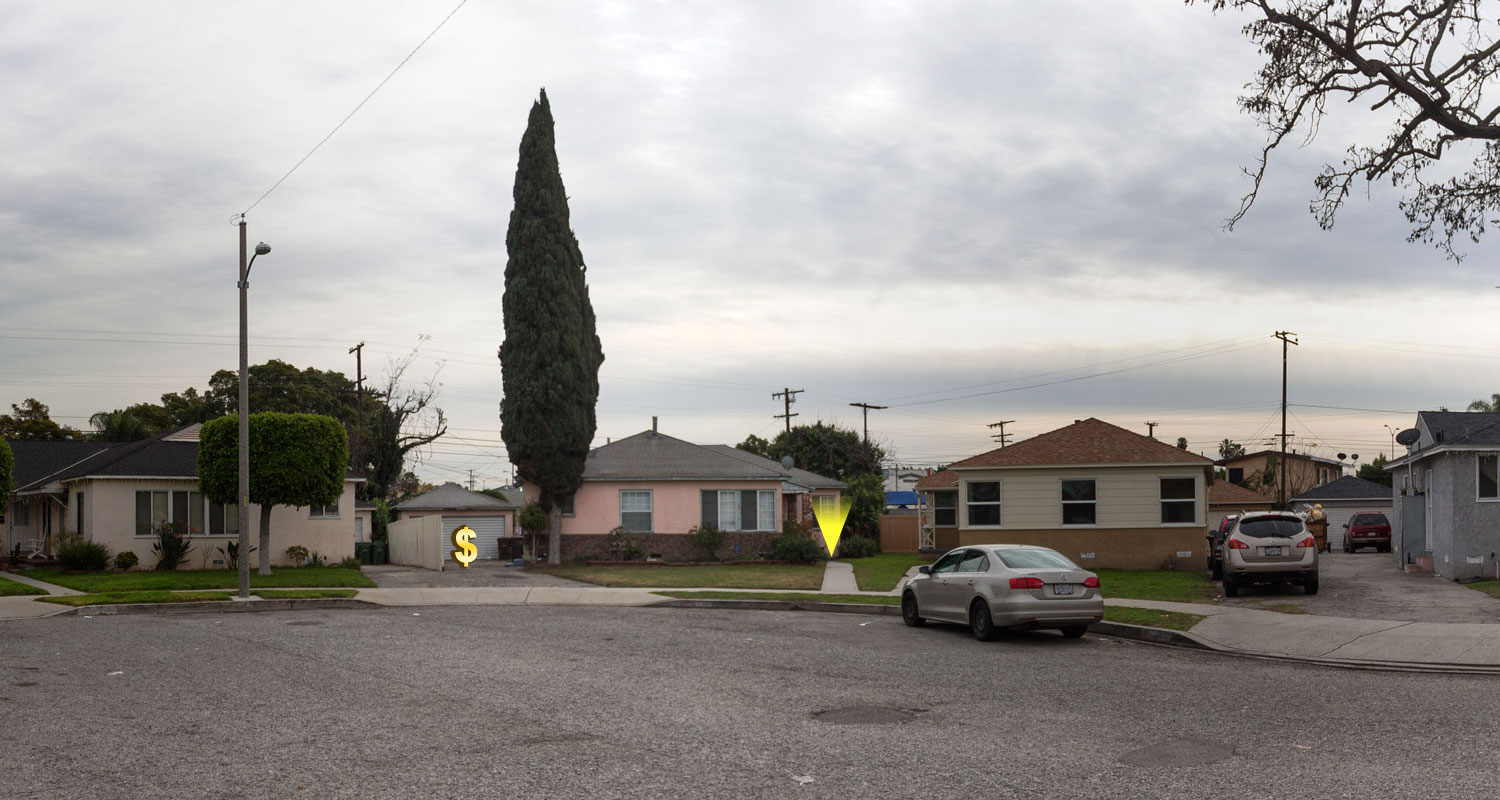
Rockstar Games, the company that released its famous game, also produced a documentary film called Sunday Driver about the lowrider subculture in Compton. At that time, the film went completely unnoticed, but now it is available for viewing.
How dangerous was South Central in the 90s? The reader is unlikely to want to delve into dry statistics, but one fact is enough.
Once, crime statistics for South Central were recorded separately from Los Angeles. The numbers were so staggeringly high that South Central ranked among the top ten most dangerous cities in the U.S. Then it was renamed to South Los Angeles and included in the overall statistics for L.A. The figures were averaged out, and by that time, crime rates had dropped, gradually making South Central fade from view.
During those times, simply wearing the wrong color of clothing in Compton could potentially get you shot, as you could be mistaken for a member of a rival gang.
Of course, now all of that is in the past, and it’s possible to walk around the neighborhood. However, it’s still better not to flaunt expensive belongings.
However, there is nowhere to stroll around here. Throughout South Los Angeles, there is only one notable attraction — the towers in the Watts area. It’s a completely idiotic structure built by some immigrant from Italy. No matter how much I’ve read, I still haven’t seen any cultural value in them.
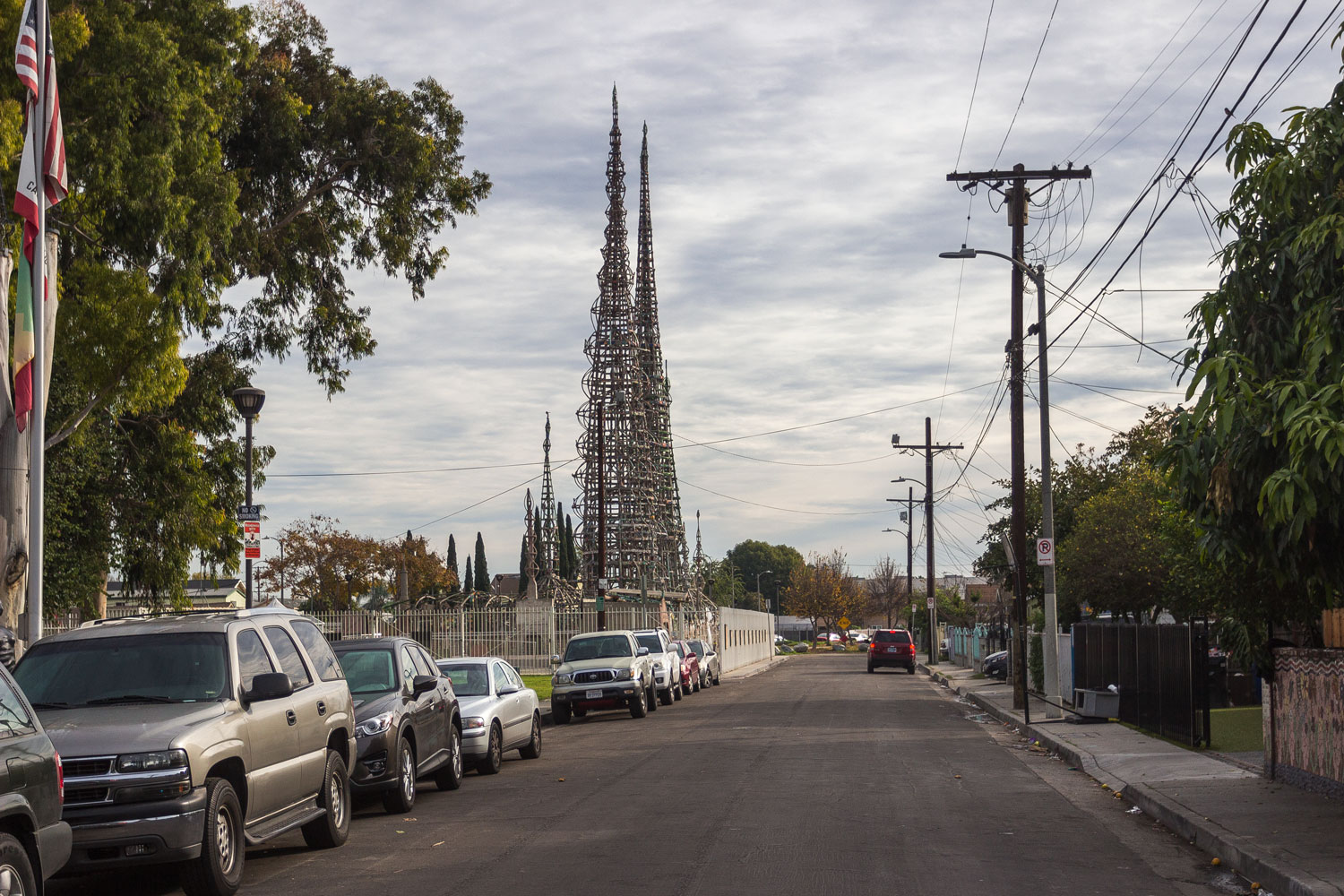
A pile of rubbish, assembled from waste materials such as bottles, corks, and other debris.


Next to the towers, there are some colorful little houses. It’s a decent street for this area.


Advertisement: “Job for teenagers: earn money for New Year. No work experience required.” I wonder what kind of job they are offering? Delivering pizza or selling crack?
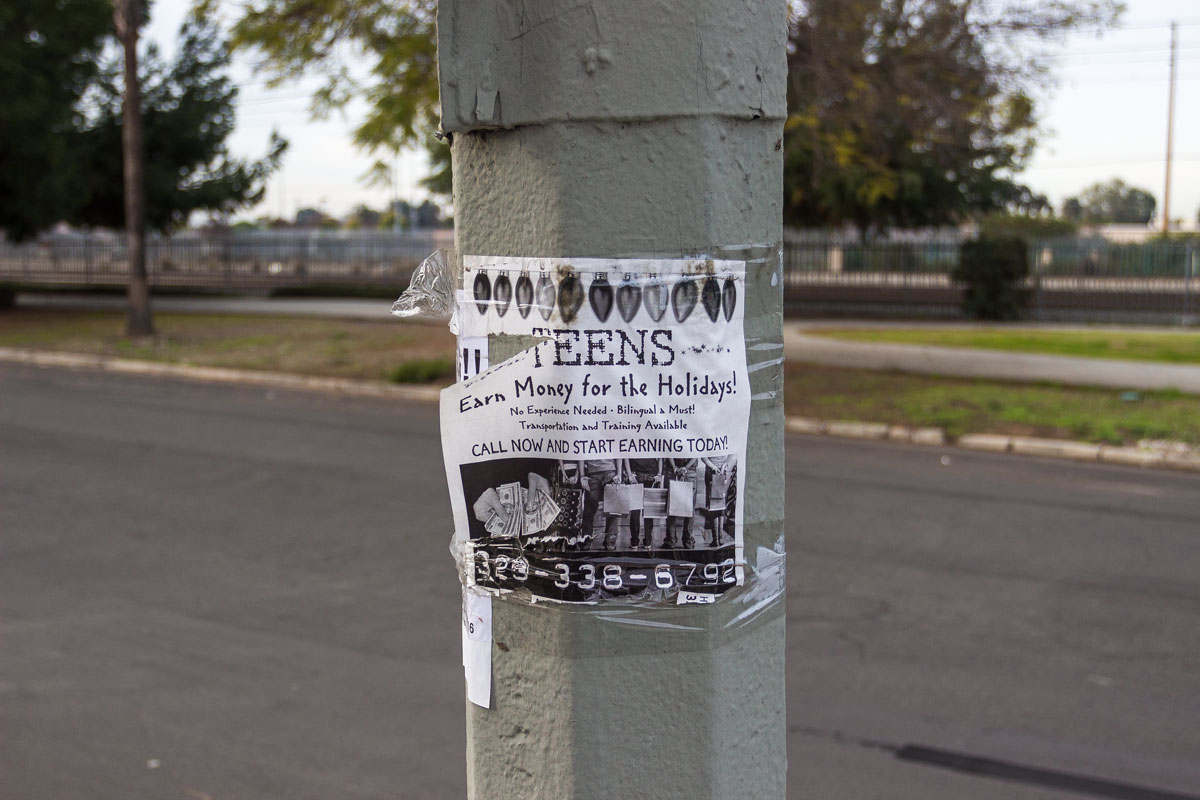
Streets of the Watts district.

Street art. Subtle inscriptions — tags of some local groups.

Streets of Compton.

College in Compton. Who said there are no fences in the USA? There are, but only in the ghetto.

Someone’s house. On the roof, there is a toy locomotive, a decoration for New Year.

There is absolutely nothing to do in Compton except for getting on your nerves. There is nothing here. Dilapidated houses, dirty streets, and a bunch of KFC. A couple of police helicopters constantly circle the neighborhood, just like in the movies. The streets are empty and devoid of people.
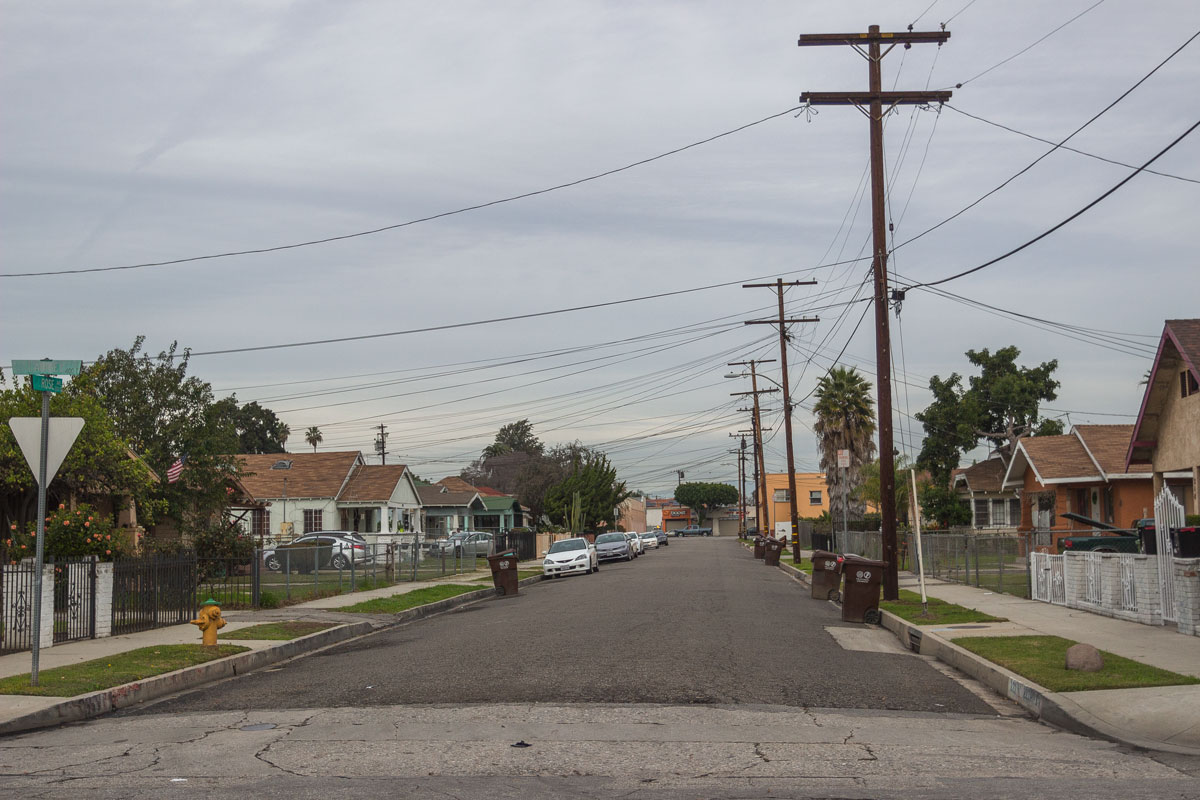
By the way, there is a river that runs through all of Los Angeles. It is not shown on maps because it has long since dried up and been confined to a concrete channel. The chase scene from Terminator was filmed in this channel.

Skid Row
Los Angeles wouldn’t be so bad if the ghettos were somewhere far away, behind a high fence. But the problem is that the ghettos come right up to downtown.
Strictly speaking, downtown is not the city center. It is the name for the business districts, usually with skyscrapers. In Los Angeles, downtown is rather dull, but there are a few decent high-rise buildings.

A pitiful sight.
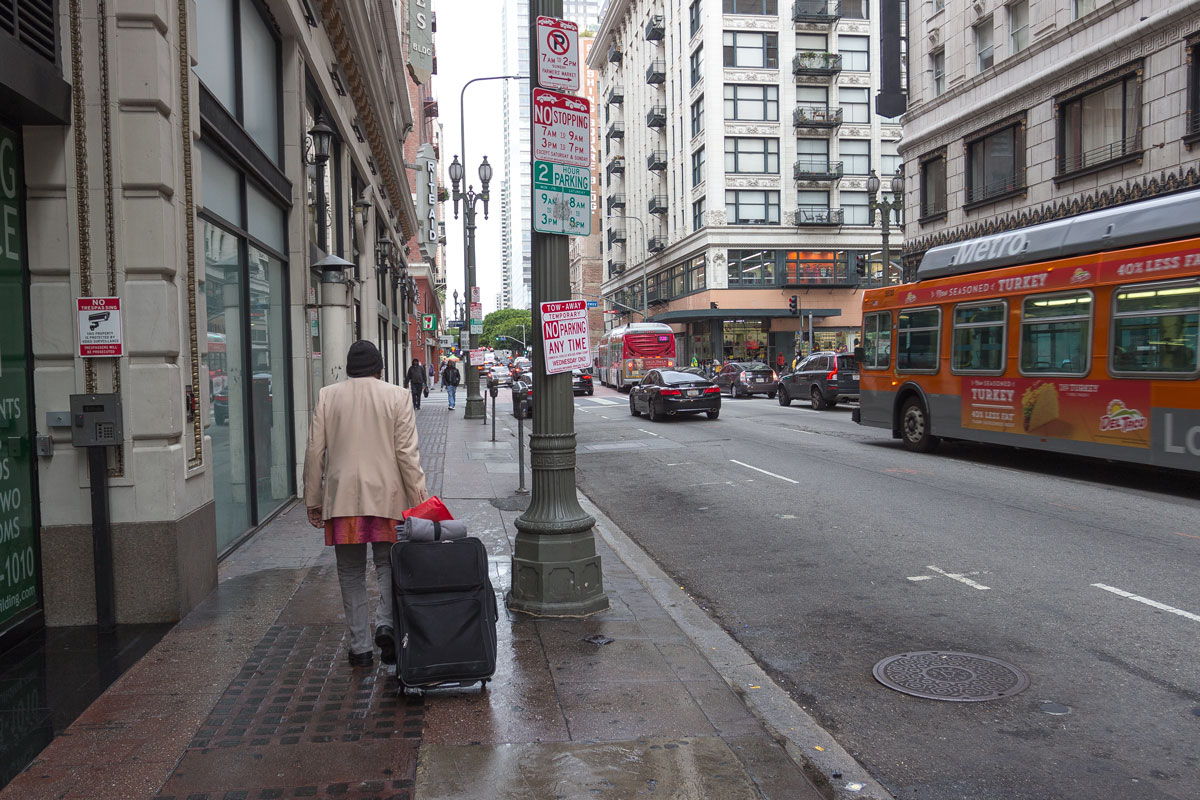
If you wander around here without a map, you can easily make a turn and suddenly find yourself in the Skid Row area. Just a minute ago, there were skyscrapers, and then bam — ghetto.
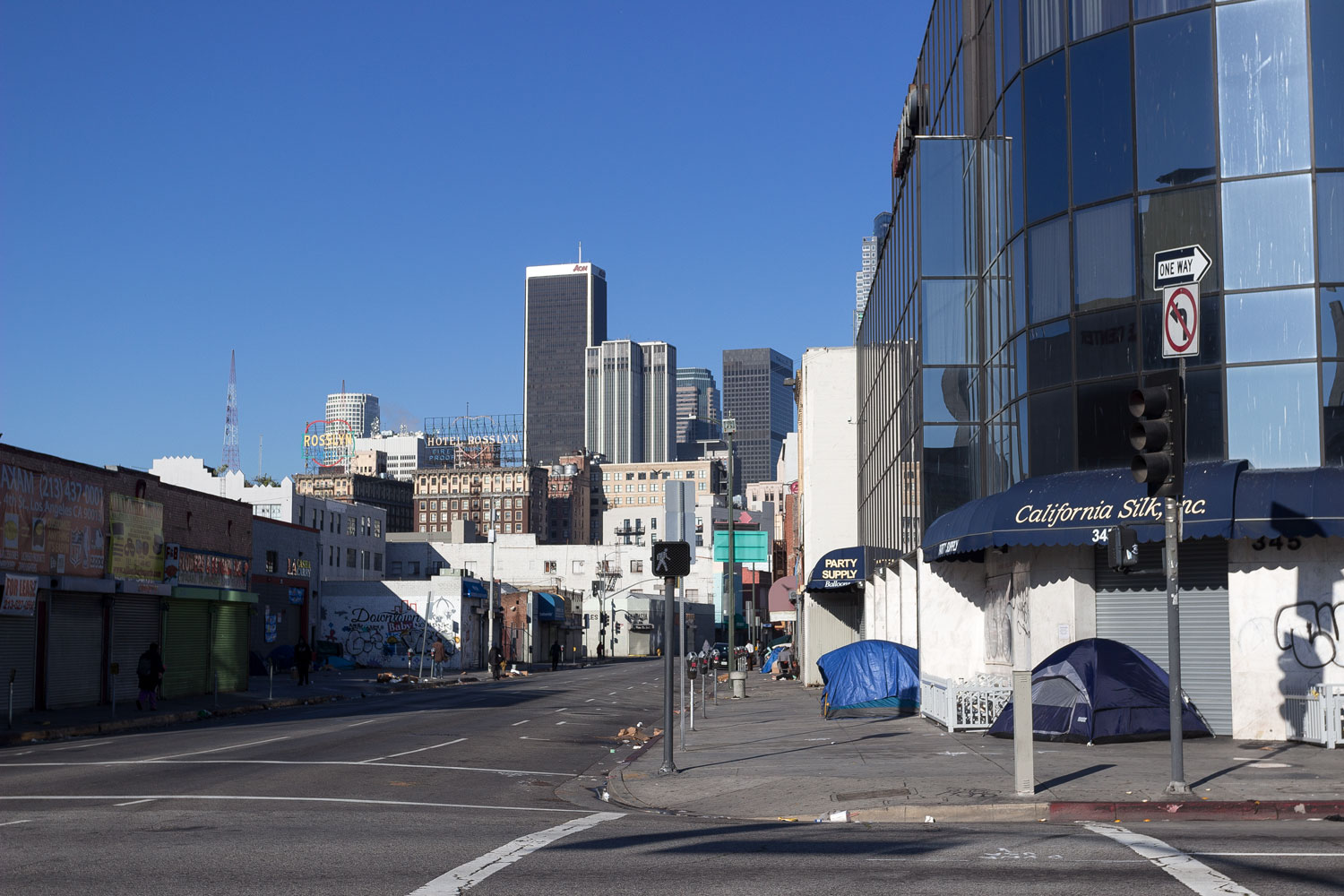
But Skid Row is not just another neighborhood in South Central. It’s an entirely separate world, and a world ten times worse than the black neighborhoods.
People in Compton live in houses. In poor, single-story houses, but still houses. In Skid Row, people live on the streets. Skid Row is the largest district of shelters and homeless encampments in America.

Eight thousand people live in Skid Row in shelters and tents on the street.

Skid Row is a real piece of Bangladesh, somehow ending up in the center of California. Tents are lined up along every street here, on both sides.
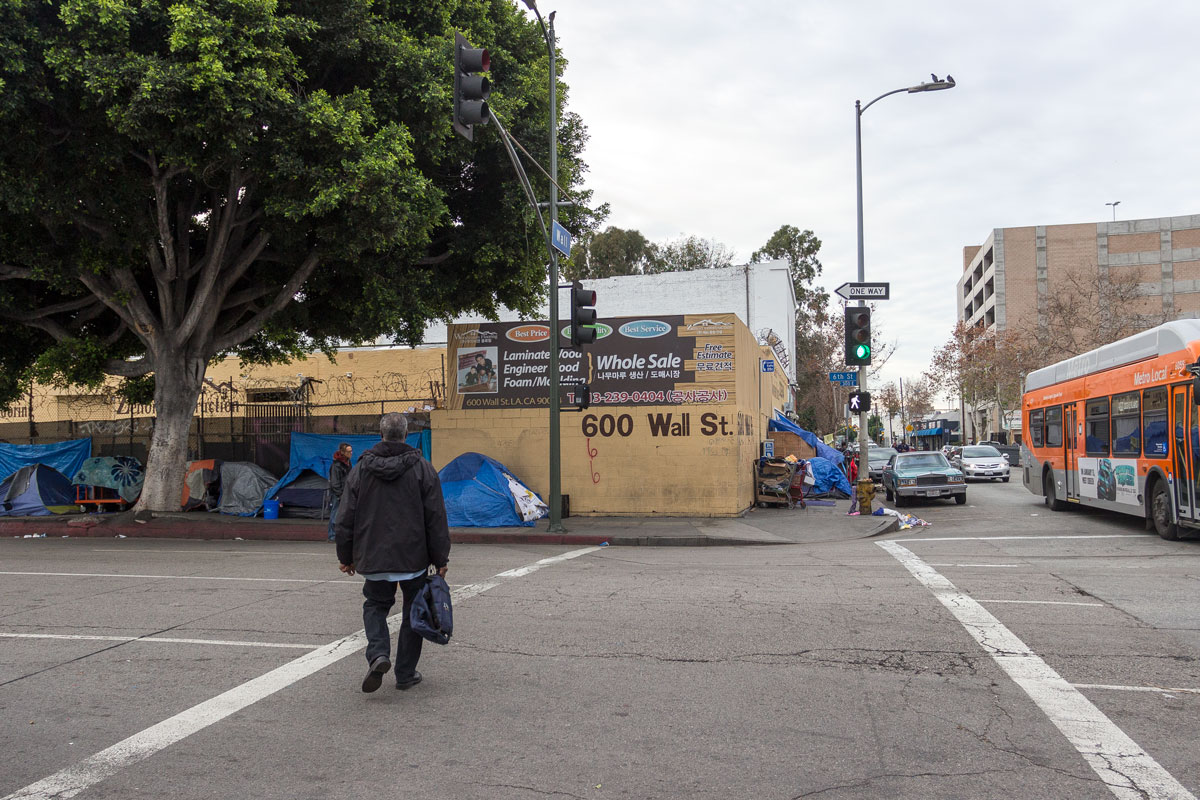
The rows extend beyond the horizon.

The dwellings are partially makeshift — blue tarpaulins provided by charitable foundations, and the cardboard was added by the residents themselves.

The place is a complete dump. People live, eat, and defecate in the same area.
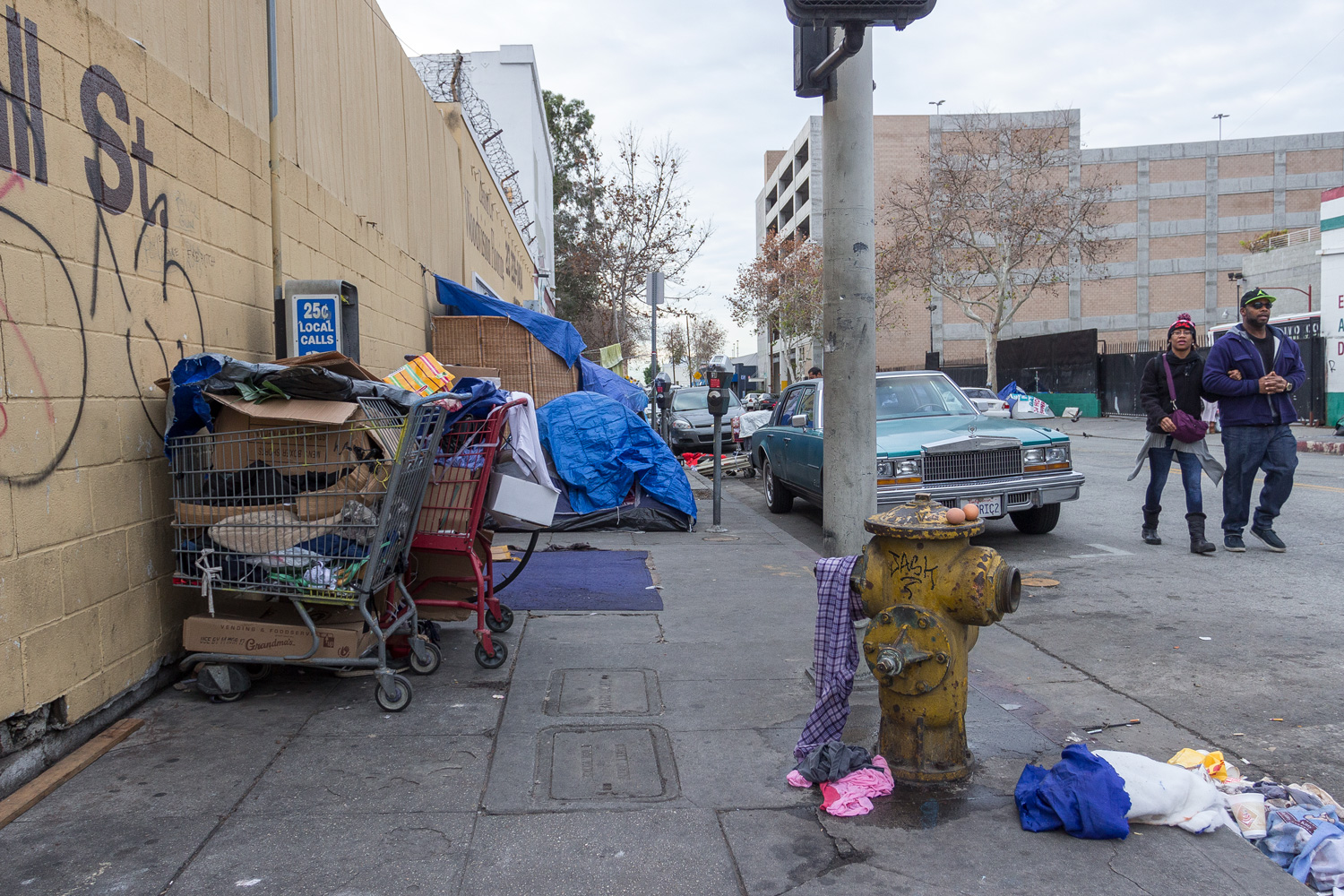
Skid Row is now much more dangerous than Compton. While passions have somewhat subsided in Compton, and people are busy with their daily activities, Skid Row has gathered the lowest of the low — filthy and disheveled homeless individuals, drug addicts, and alcoholics, among whom approximately 20% suffer from serious mental disorders. They have nothing to do, no jobs at all. So, these individuals can easily smash someone’s head with a brick or snatch away a camera.
It’s unpleasant to walk along Skid Row even with empty hands. Every third person shouts something after you. When you walk with a camera, they openly start harassing you. One homeless person even asked me where I stole it from and how much I’m willing to sell it for.
Fortunately, there is a police station in the center of Skid Row, and it is safe to be near it. It’s better not to venture deep into the neighborhood alone.
And to even greater fortune, there are people who managed to penetrate the Skid Row community and immerse themselves in their role. These are photographs by American journalist Suzanna Stein, and I won’t comment on them.
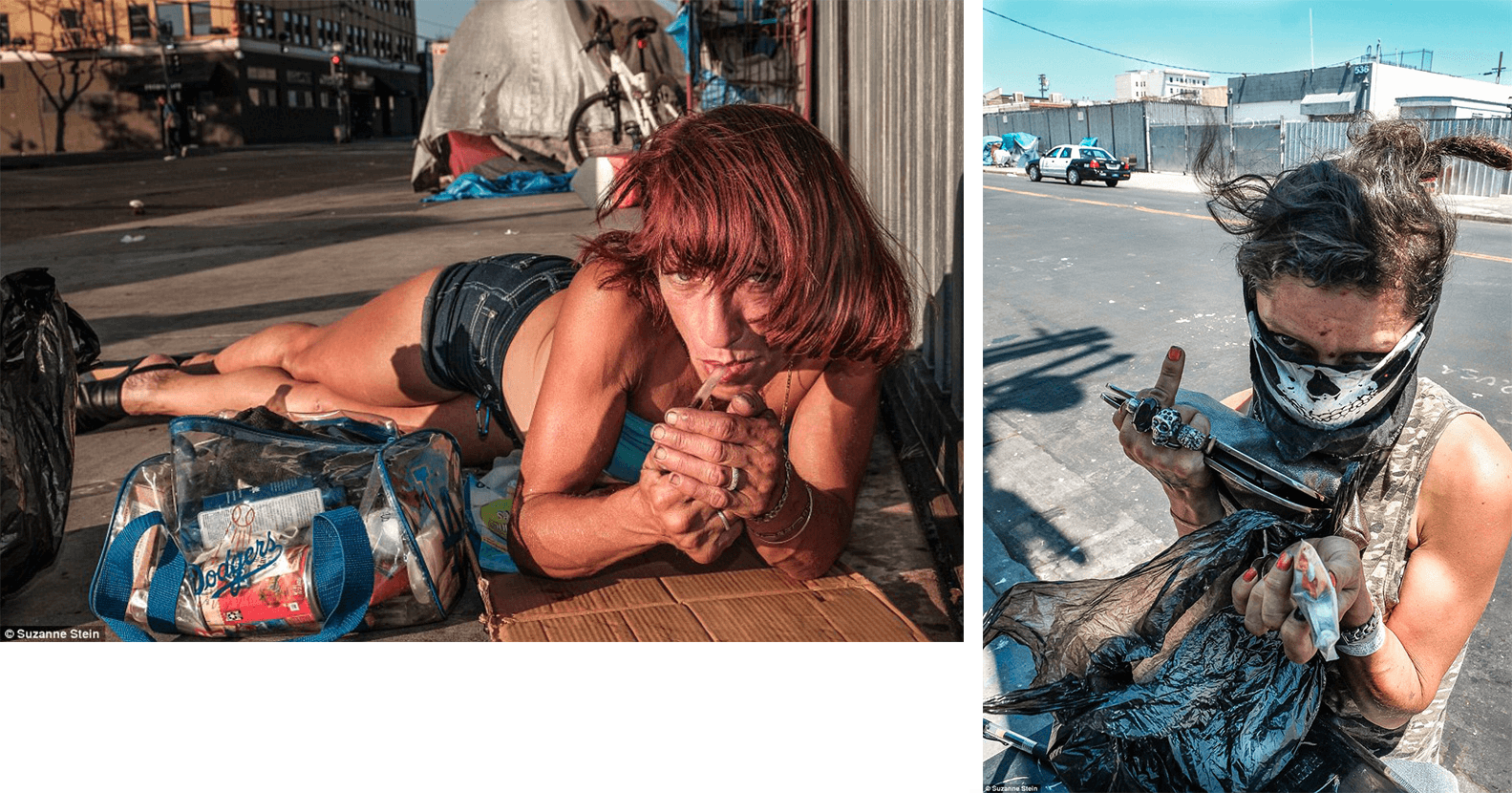
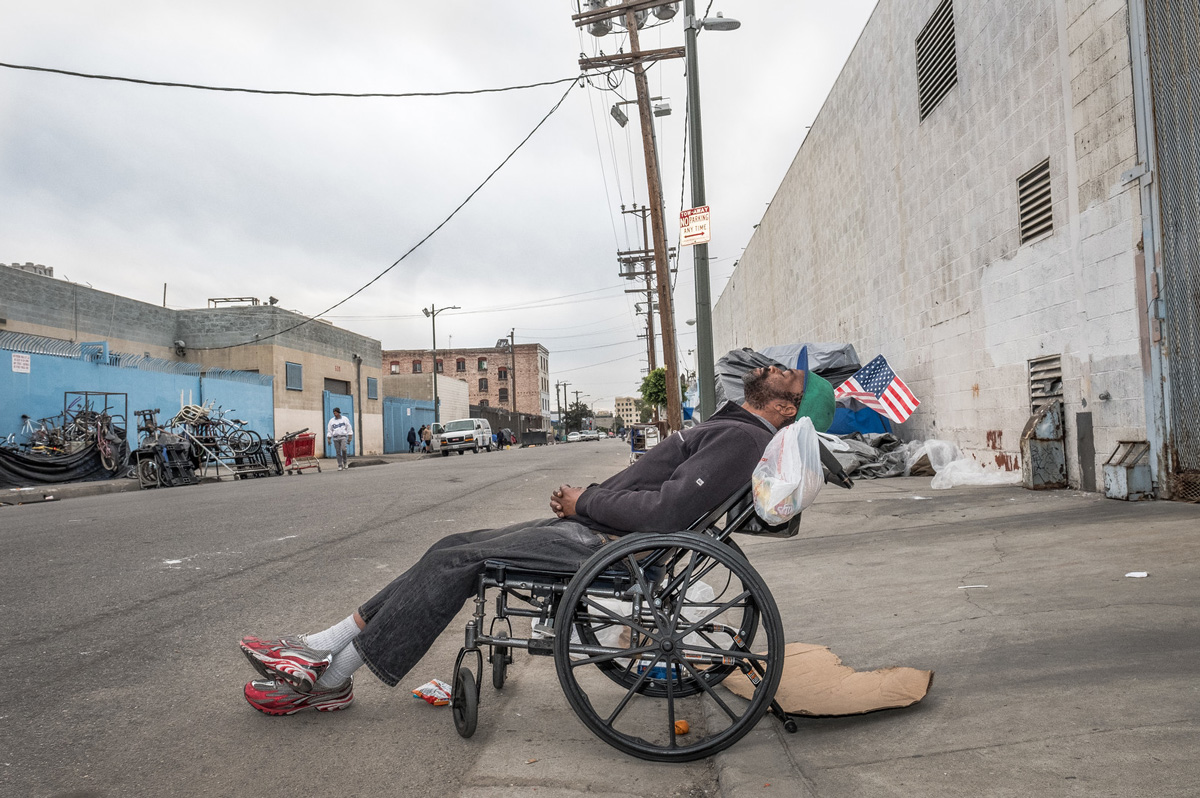



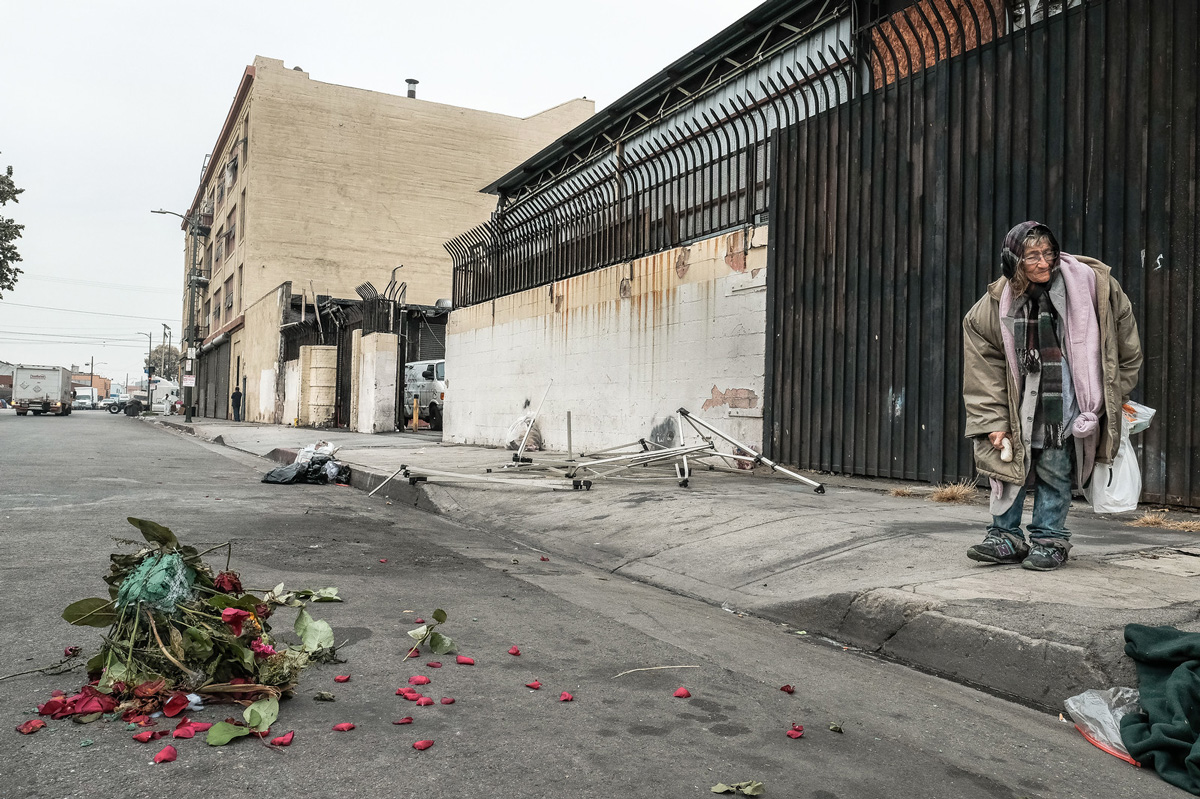
⁂
This was America. Los Angeles.
His example is not unique. People live like this in many cities in the USA — in New York, Detroit, Baltimore, New Orleans, and others.
Fortunately, we won’t come across such places anymore in this journey through California, and we will be enchantedly admiring every photograph — every corner in California is beautiful.
But we must keep in mind: besides beauty and wealth, there is also a flip side to the United States of America. And this side is dreadful.


